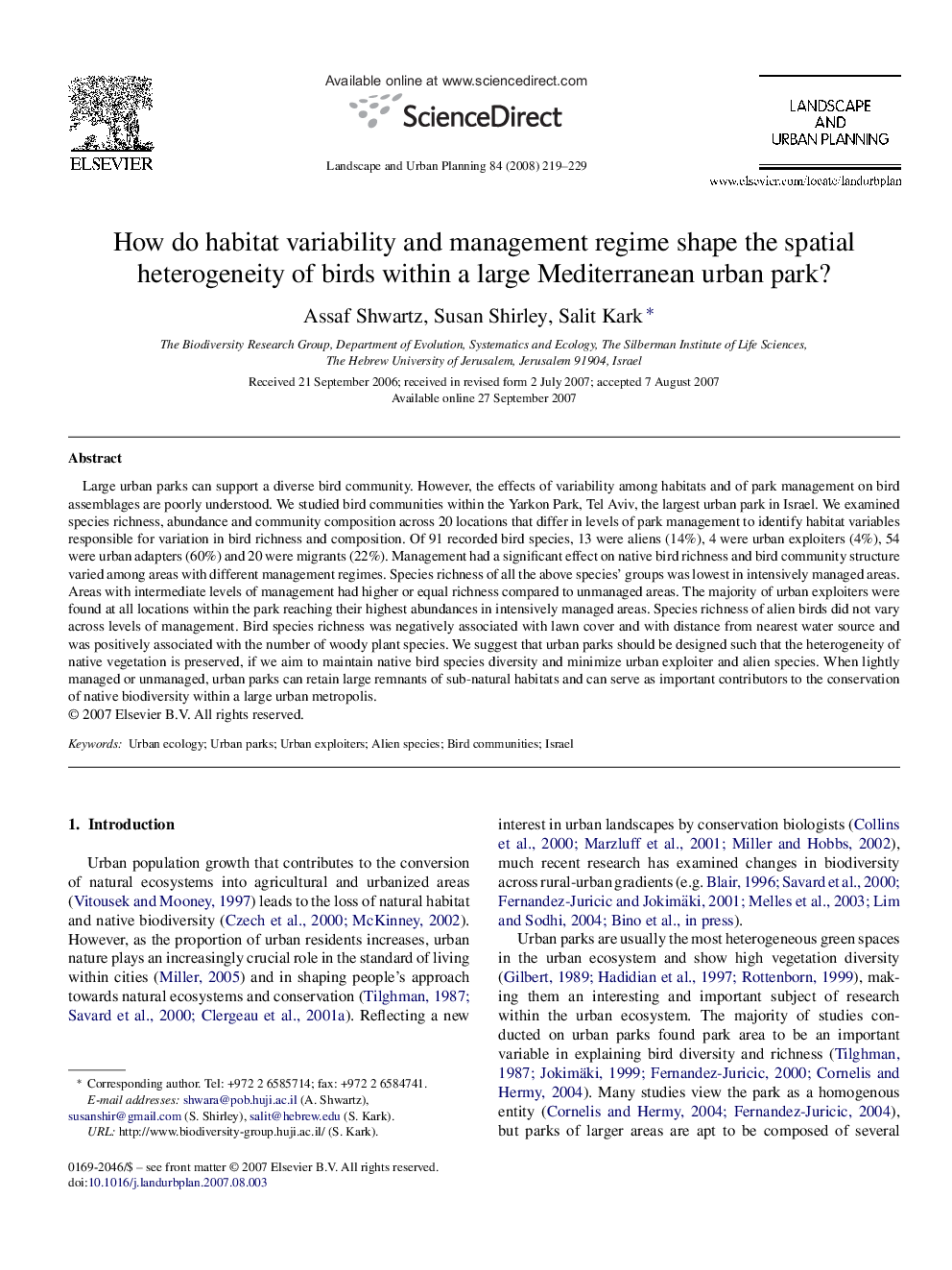| Article ID | Journal | Published Year | Pages | File Type |
|---|---|---|---|---|
| 1050151 | Landscape and Urban Planning | 2008 | 11 Pages |
Large urban parks can support a diverse bird community. However, the effects of variability among habitats and of park management on bird assemblages are poorly understood. We studied bird communities within the Yarkon Park, Tel Aviv, the largest urban park in Israel. We examined species richness, abundance and community composition across 20 locations that differ in levels of park management to identify habitat variables responsible for variation in bird richness and composition. Of 91 recorded bird species, 13 were aliens (14%), 4 were urban exploiters (4%), 54 were urban adapters (60%) and 20 were migrants (22%). Management had a significant effect on native bird richness and bird community structure varied among areas with different management regimes. Species richness of all the above species’ groups was lowest in intensively managed areas. Areas with intermediate levels of management had higher or equal richness compared to unmanaged areas. The majority of urban exploiters were found at all locations within the park reaching their highest abundances in intensively managed areas. Species richness of alien birds did not vary across levels of management. Bird species richness was negatively associated with lawn cover and with distance from nearest water source and was positively associated with the number of woody plant species. We suggest that urban parks should be designed such that the heterogeneity of native vegetation is preserved, if we aim to maintain native bird species diversity and minimize urban exploiter and alien species. When lightly managed or unmanaged, urban parks can retain large remnants of sub-natural habitats and can serve as important contributors to the conservation of native biodiversity within a large urban metropolis.
